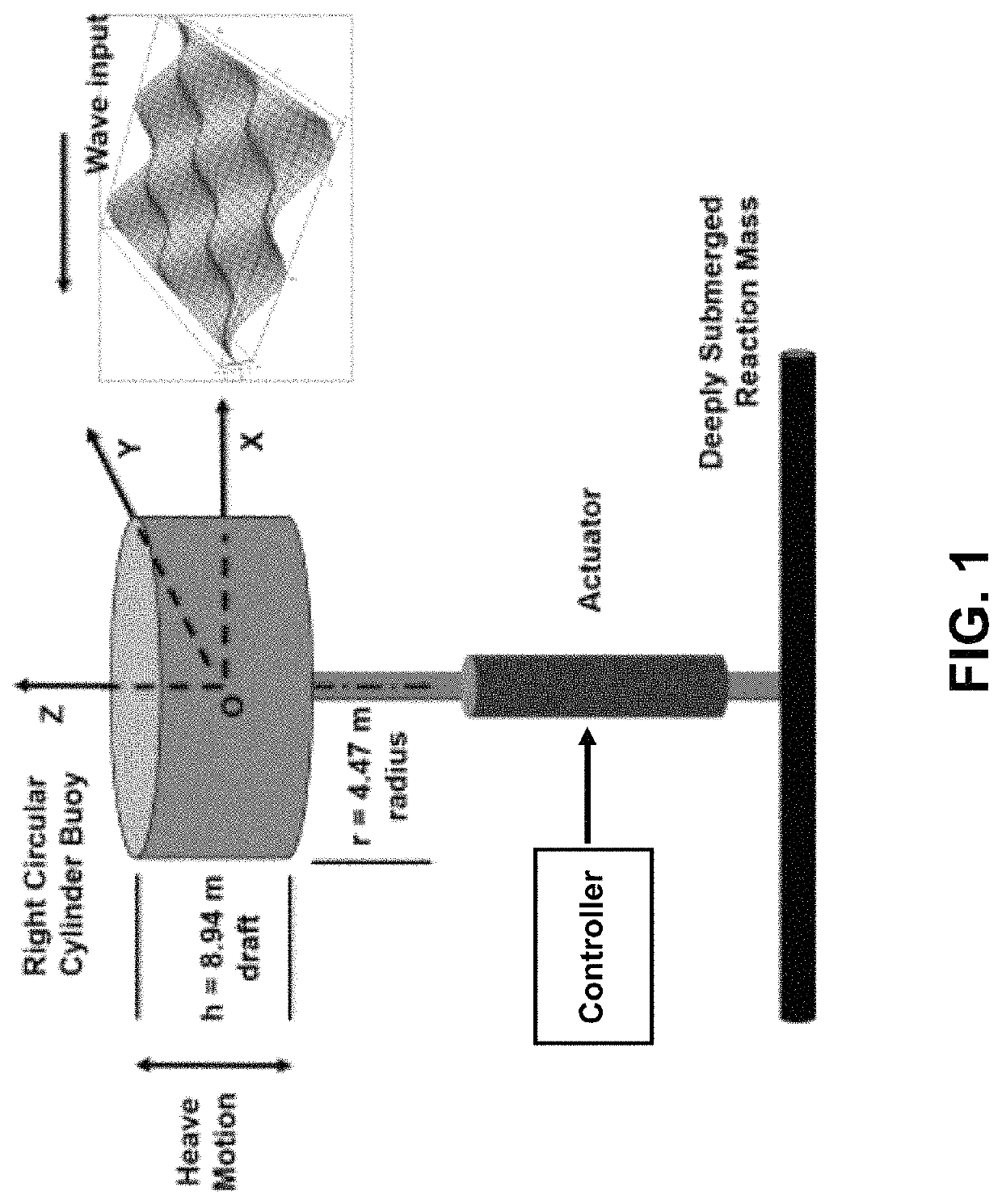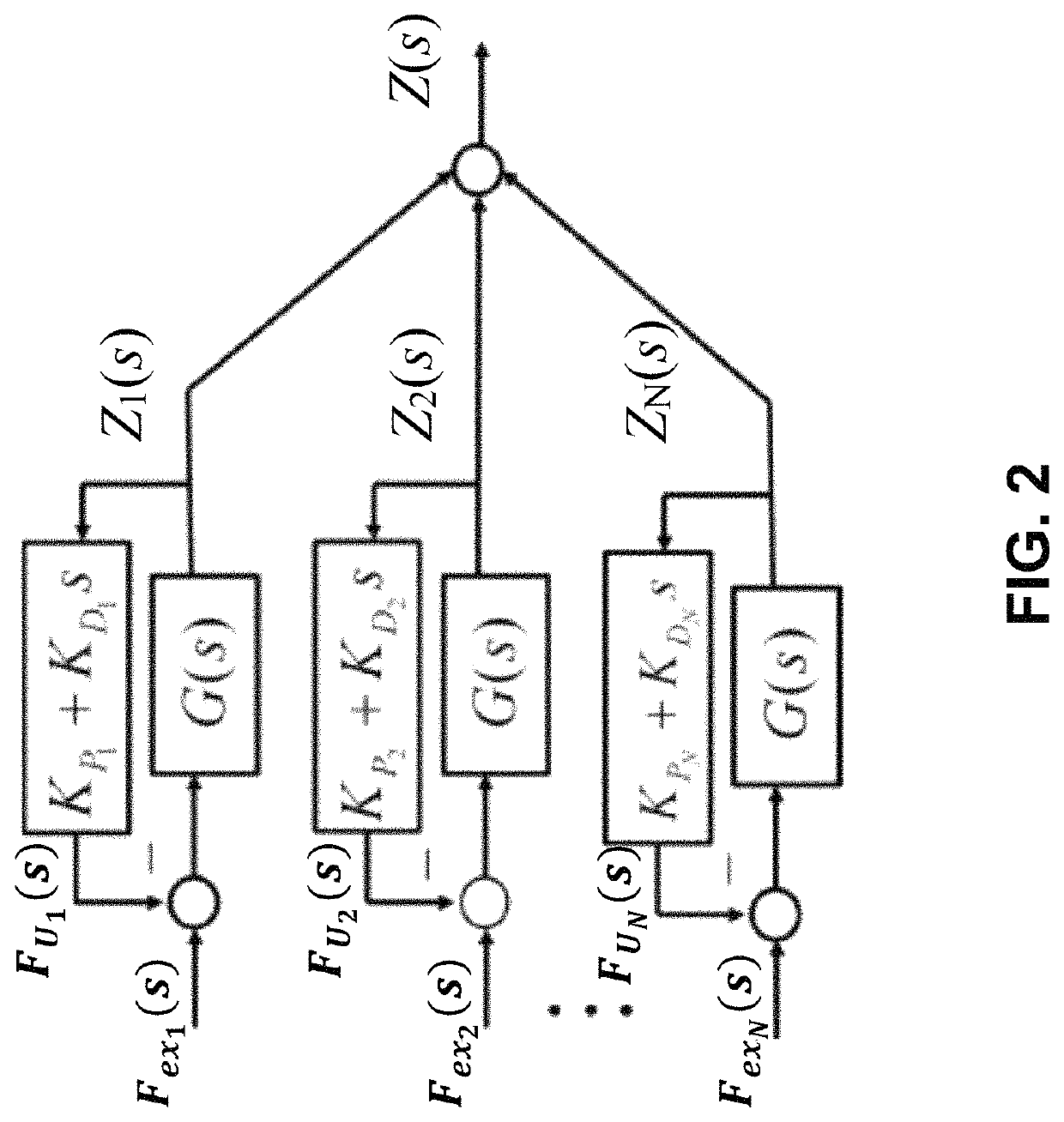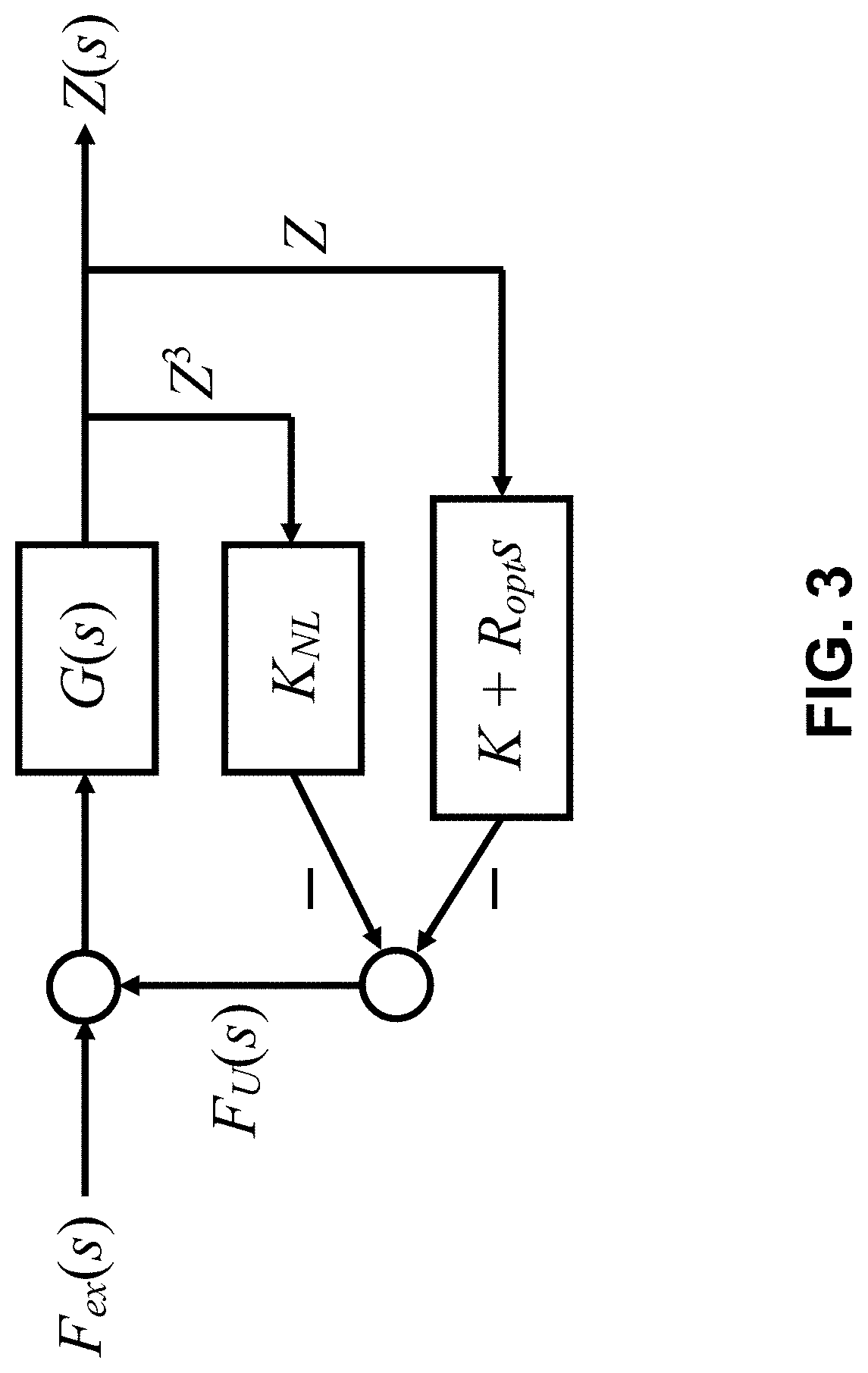Nonlinear controller for nonlinear wave energy converters
a controller and nonlinear wave technology, applied in the field of wave energy converters, can solve the problems of less efficient wec operation, achieve the effects of reducing reactive power requirements, reducing operating costs, and improving reactive power requirements
- Summary
- Abstract
- Description
- Claims
- Application Information
AI Technical Summary
Benefits of technology
Problems solved by technology
Method used
Image
Examples
Embodiment Construction
[0022]A simplified WEC is shown in FIG. 1. The WEC includes a buoy that is mechanically coupled to a reference, in this example a deeply submerged reaction mass. As shown, the reaction mass can remain essentially stationary as the buoy moves. In this simplified WEC, the buoy is a right circular cylinder that can move up and down along a vertical z axis in a heaving motion in phase with a wave input (a real buoy would generally move with three degrees-of-freedom, further including an up / down rotation about a center-of-gravity in a pitching motion, and back-and-forth, side-to-side displacement in a surging motion). A power take-off (PTO) can be configured to convert the buoy motion to electrical energy, which can then be output by way of a transmission line (not shown). An actuator can couple the buoy and the reaction mass. As indicated above, the WEC can be structurally designed to have a resonant frequency within a predominant spectral range of the excitation wave input. Accordingly...
PUM
 Login to View More
Login to View More Abstract
Description
Claims
Application Information
 Login to View More
Login to View More - R&D
- Intellectual Property
- Life Sciences
- Materials
- Tech Scout
- Unparalleled Data Quality
- Higher Quality Content
- 60% Fewer Hallucinations
Browse by: Latest US Patents, China's latest patents, Technical Efficacy Thesaurus, Application Domain, Technology Topic, Popular Technical Reports.
© 2025 PatSnap. All rights reserved.Legal|Privacy policy|Modern Slavery Act Transparency Statement|Sitemap|About US| Contact US: help@patsnap.com



